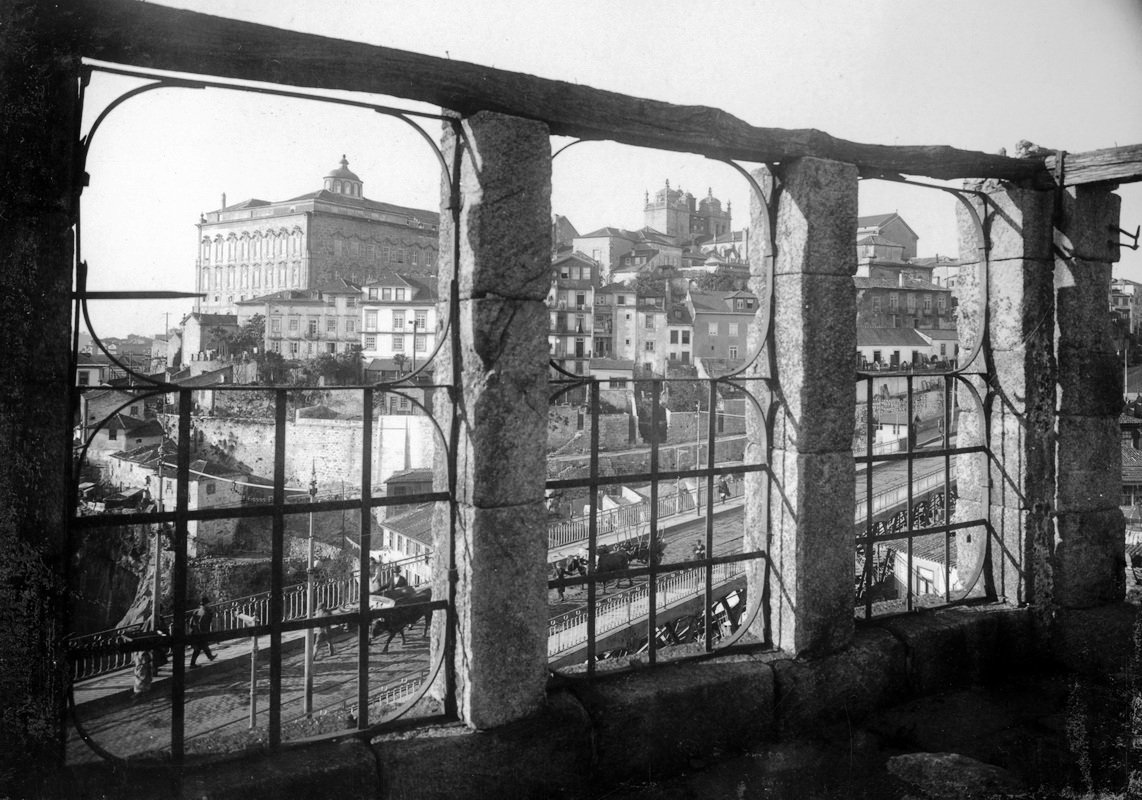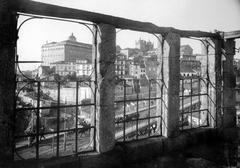
Comprehensive Guide to Visiting Paço Episcopal do Porto, Porto, Portugal
Date: 19/07/2024
Introduction
The Paço Episcopal do Porto, also known as the Episcopal Palace of Porto, is one of the most remarkable historical landmarks in Porto, Portugal. Steeped in rich history and architectural grandeur, this palace offers visitors a unique window into the cultural, religious, and political heritage of Porto. Constructed in the 12th century, the palace has evolved through various architectural styles, including Romanesque, Gothic, Renaissance, and Baroque, making it a fascinating study for architecture enthusiasts. The palace’s historical significance is underscored by its role in key events such as the Peninsular War and the Liberal Wars, as well as its continuous use as the residence of the bishops of Porto. This guide aims to provide a comprehensive overview of the Paço Episcopal do Porto, covering its intriguing history, practical visitor information, and travel tips to enhance your visit. Whether you’re a history buff, an architecture aficionado, or simply a curious traveler, this guide will equip you with all the essential details for an enriching experience. For more detailed information, you can visit the official website of the Diocese of Porto.
Table of Contents
- Introduction
- History of Paço Episcopal do Porto
- Visitor Information
- Travel Tips
- Nearby Attractions
- Accessibility
- FAQ
- Conclusion
History of Paço Episcopal do Porto
Origins and Early History
The Paço Episcopal do Porto has a rich history that dates back to the 12th century. The initial construction of the palace began under the orders of Bishop Hugo, who sought to establish a residence that would reflect the growing importance of Porto as a religious and administrative center. The original structure was relatively modest, but it laid the foundation for future expansions and renovations.
Medieval Transformations
Throughout the medieval period, the palace underwent several significant transformations. In the 14th century, Bishop João Rafael made substantial modifications to the building, enhancing its defensive capabilities. This was a period marked by frequent conflicts, and the palace’s fortified walls and strategic location on a hill overlooking the Douro River made it a critical stronghold.
Renaissance and Baroque Influences
The 16th and 17th centuries brought about a wave of Renaissance and Baroque influences that dramatically altered the architectural style of the Paço Episcopal do Porto. Bishop Rodrigo Pinheiro, who served from 1552 to 1582, was instrumental in commissioning many of these changes. Under his direction, the palace was expanded and embellished with ornate decorations, reflecting the opulence and grandeur of the Baroque period.
One of the most notable additions from this era is the grand staircase, designed by the Italian architect Nicolau Nasoni. Nasoni’s work is characterized by its intricate carvings and elegant proportions, which have made the staircase one of the palace’s most iconic features.
18th Century Renovations
The 18th century was a period of extensive renovation and expansion for the Paço Episcopal do Porto. Bishop Rafael de Mendonça, who served from 1741 to 1760, spearheaded a major reconstruction project that aimed to modernize the palace and enhance its functionality. This project included the addition of new wings, the refurbishment of existing rooms, and the installation of modern amenities.
During this time, the palace also became a center of cultural and intellectual activity. It hosted numerous events, including concerts, lectures, and art exhibitions, attracting some of the most prominent figures of the Portuguese Enlightenment.
The 19th Century and the Liberal Wars
The 19th century was a tumultuous period for the Paço Episcopal do Porto. The palace was heavily damaged during the Liberal Wars, a series of civil wars that took place in Portugal between 1828 and 1834. These conflicts, which pitted liberal constitutionalists against conservative absolutists, had a profound impact on the city of Porto and its landmarks.
In 1832, the palace was occupied by the liberal forces led by Dom Pedro IV, who used it as a military headquarters during the Siege of Porto. The building suffered significant damage during the siege, and many of its valuable artworks and furnishings were lost or destroyed.
Restoration and Preservation Efforts
Following the end of the Liberal Wars, efforts were made to restore and preserve the Paço Episcopal do Porto. In the late 19th and early 20th centuries, several restoration projects were undertaken to repair the damage caused by the conflicts and to preserve the palace’s historical and architectural integrity.
One of the most significant restoration efforts took place in the 1940s, under the direction of architect Rogério de Azevedo. This project aimed to restore the palace to its former glory, with a particular focus on preserving its Baroque features and decorative elements.
Modern Era and Current Use
Today, the Paço Episcopal do Porto stands as a testament to the city’s rich history and cultural heritage. It continues to serve as the residence of the Bishop of Porto and is also a popular tourist attraction. Visitors can explore the palace’s opulent rooms, admire its stunning architecture, and learn about its fascinating history through guided tours and exhibitions.
In recent years, the palace has also become a venue for cultural events and exhibitions, further cementing its status as a cultural landmark in Porto. The ongoing preservation efforts ensure that the Paço Episcopal do Porto remains a cherished part of the city’s heritage for future generations to enjoy.
Visitor Information
Visiting Hours
The Paço Episcopal do Porto is open to visitors from Tuesday to Sunday, 10:00 AM to 6:00 PM. It is closed on Mondays and public holidays. It’s advisable to check the official website for any changes in the schedule before planning your visit.
Tickets
Tickets for the Paço Episcopal do Porto can be purchased at the entrance or online through the official website. General admission is €5, with discounts available for students, seniors, and groups. Children under the age of 12 can enter for free.
Travel Tips
Best Time to Visit
The palace is less crowded during the early morning hours and on weekdays. Visiting during these times can provide a more relaxed experience.
Guided Tours
Consider taking a guided tour to fully appreciate the history and architectural details of the palace. Tours are available in multiple languages.
Photography
Photography is allowed inside the palace, but the use of flash and tripods is prohibited. Be sure to capture the grand staircase and other unique features.
Nearby Attractions
The Paço Episcopal do Porto is conveniently located near several other historical sites and attractions. Some notable nearby locations include:
- Porto Cathedral - A stunning Romanesque cathedral just a short walk away.
- Ribeira District - A picturesque area along the Douro River, perfect for a leisurely stroll.
- Dom Luís I Bridge - An iconic double-deck iron bridge offering breathtaking views of Porto.
Accessibility
The Paço Episcopal do Porto is committed to providing access to all visitors. The palace is equipped with ramps and elevators to accommodate wheelchair users. Accessible restrooms are also available on-site. For additional assistance, it’s recommended to contact the palace staff in advance.
FAQ
Q: Are there any special events held at the Paço Episcopal do Porto?
A: Yes, the palace hosts various cultural events, including concerts, art exhibitions, and lectures. Check the official website for a schedule of upcoming events.
Q: Can I book a private tour of the Paço Episcopal do Porto?
A: Yes, private tours can be arranged by contacting the palace’s administration in advance.
Q: Is there parking available near the Paço Episcopal do Porto?
A: Limited parking is available nearby, but it’s recommended to use public transportation or taxis to reach the palace.
Conclusion
The Paço Episcopal do Porto is more than just a historical monument; it’s a vibrant cultural hub that continues to play a significant role in the life of the city. From its medieval origins to its modern-day use, the palace offers a unique journey through time. Whether you’re exploring its opulent rooms, attending a cultural event, or simply enjoying the stunning architecture, a visit to the Paço Episcopal do Porto is an experience not to be missed.
For more detailed information on the history and significance of the Paço Episcopal do Porto, you can visit the official website of the Diocese of Porto.
References
- Paço Episcopal do Porto - History, Visiting Hours, and Tickets, 2023, Diocese of Porto source
- Exploring the Paço Episcopal do Porto - History, Visiting Hours, and Tickets, 2023, Diocese of Porto source
- Visitor Tips for Paço Episcopal do Porto - Tickets, Hours, and Nearby Attractions, 2023, Diocese of Porto source







































